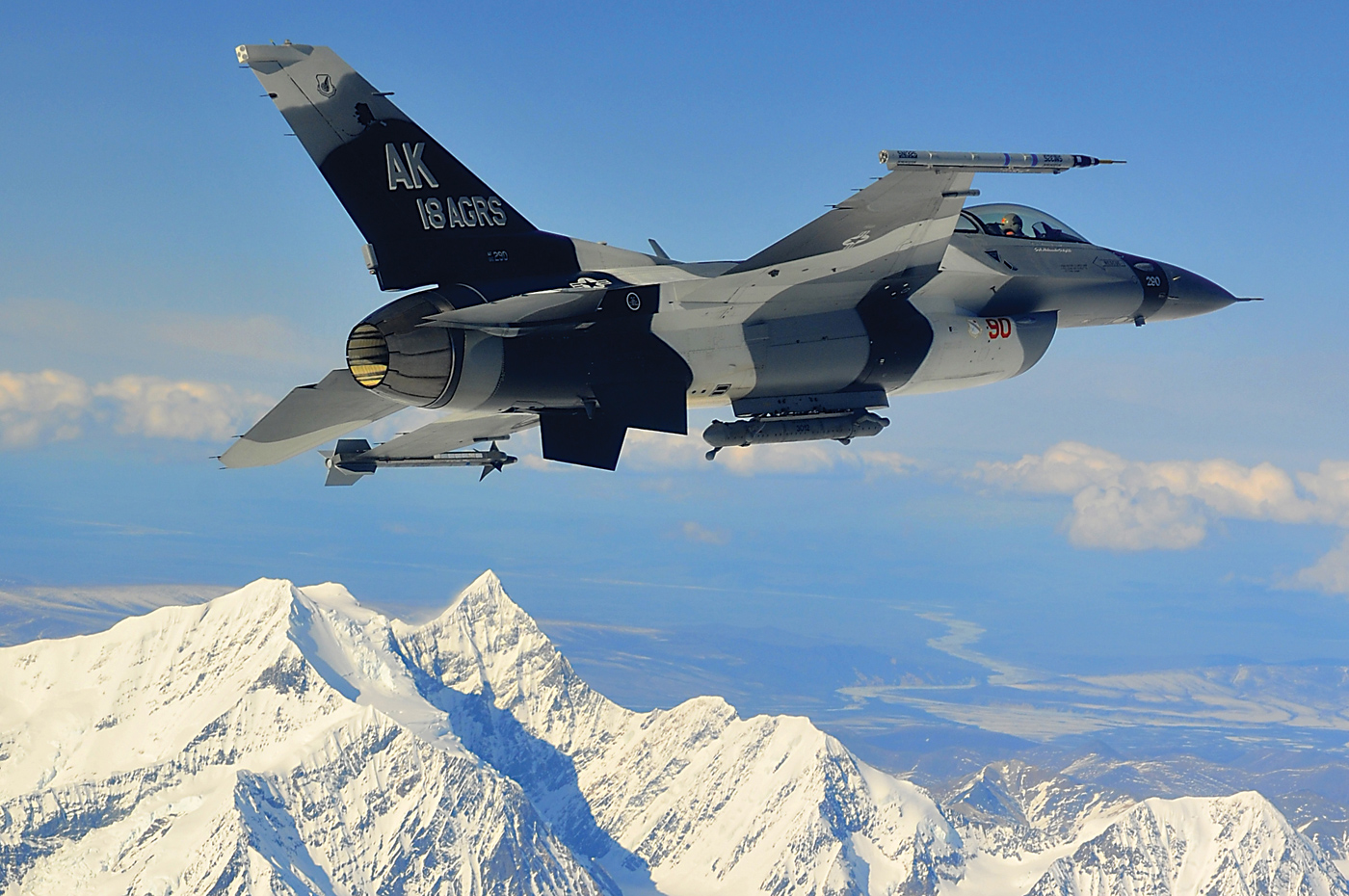Estimated reading time 12 minutes, 45 seconds.
Ask an actor what role they most enjoy, and the answer is often the same: the villain. Playing a well-scripted enemy is a challenge most come to relish.
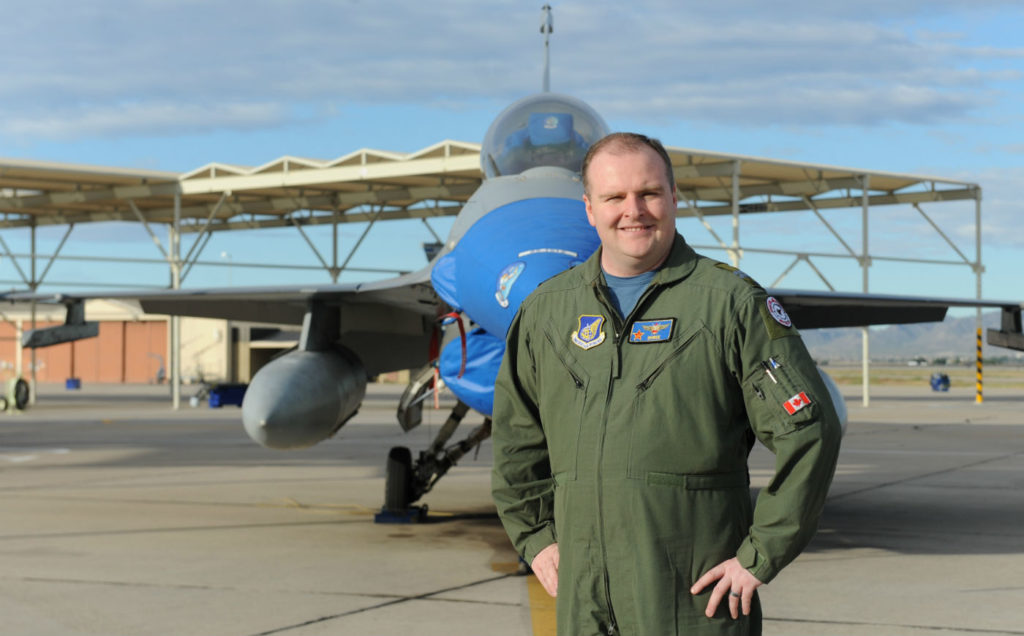
Capt Michael “Shrek” Walker would probably agree. Since being assigned to the United States Air Force (USAF) 18th Aggressor Squadron of the 354th Fighter Wing at Eielson Air Force Base in Alaska, the Royal Canadian Air Force (RCAF) CF-188 Hornet pilot has come to appreciate the role of the adversary.
The 18th Aggressors are one of two USAF squadrons with the vital task of replicating the threats of enemy air forces in domestic and multinational training exercises. It’s a role they embrace with total commitment, from the exhaustive research they compile on rival aircraft, weapons systems and tactics, to the insignia on their helmets, the surnames on their flight suits, and memorabilia of the former Soviet Union, Russian, Chinese and North Korean air forces, among others, in their squad room.
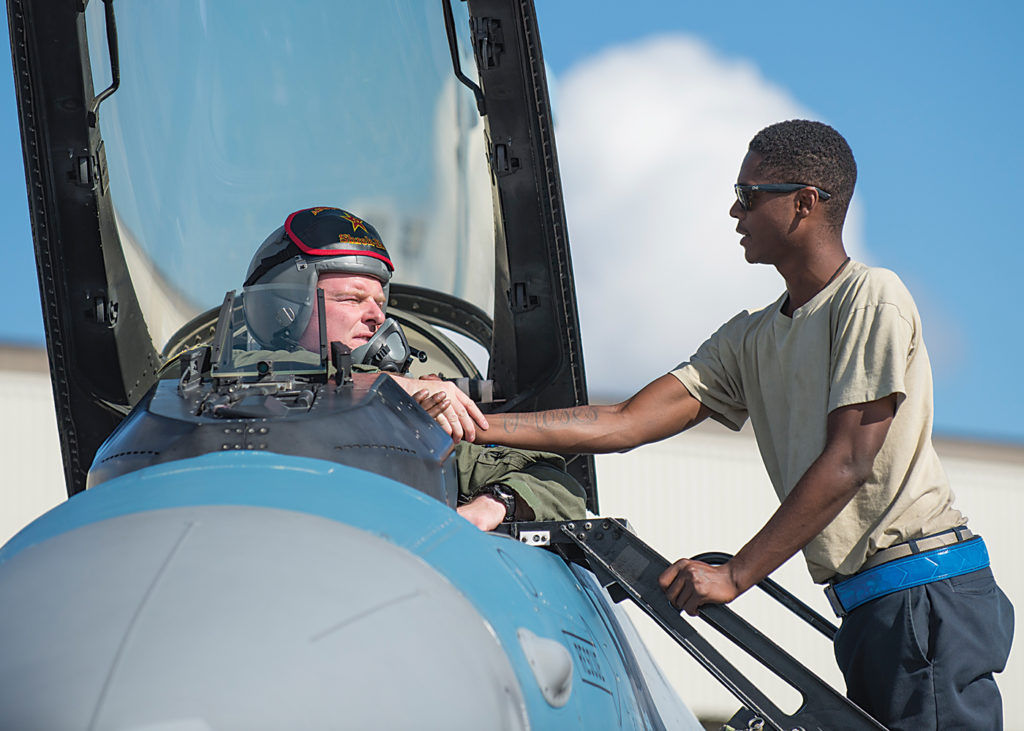
“We try to create a culture and immerse ourselves in that,” Walker acknowledged in a recent interview with RCAF Today.
Like the villain, however, that attention to detail is not always appreciated. For some pilots in training, the Aggressors, or red air, can be their worst nightmare.
But the squadron’s approach has a specific focus: to prepare “blue force” pilots to respond and counter enemy threats through the best and most realistic training possible.
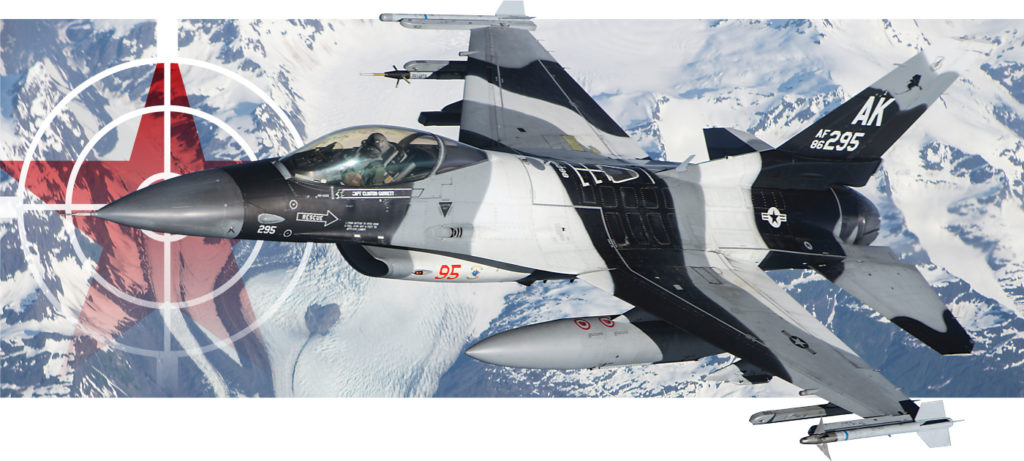
“I think for the most part we are respected and people understand what we bring to the table,” said Walker. “There might be some hard feelings because a guy is on an upgrade and our threat level might be a lot more than he has seen on home station training, and maybe he doesn’t pass that ride.”
But the Aggressor reputation of an earlier era for being “scalp takers,” with the sole objective of winning each encounter, has been replaced by recognition for “having the most accurate information around and replicating it as accurately as humanly possible.”
“We are not out there trying to win the exercise,” he said. “We’re just trying to provide the most realistic picture we can within the boundaries of the scenario we are asked to train in.”
Each pilot in the squadron is a subject matter expert, well researched and repeatedly tested on the specifics of missiles, radars, airframes or tactics, all of which are adapted to fit the requirements of blue force commanders on a specific exercise.
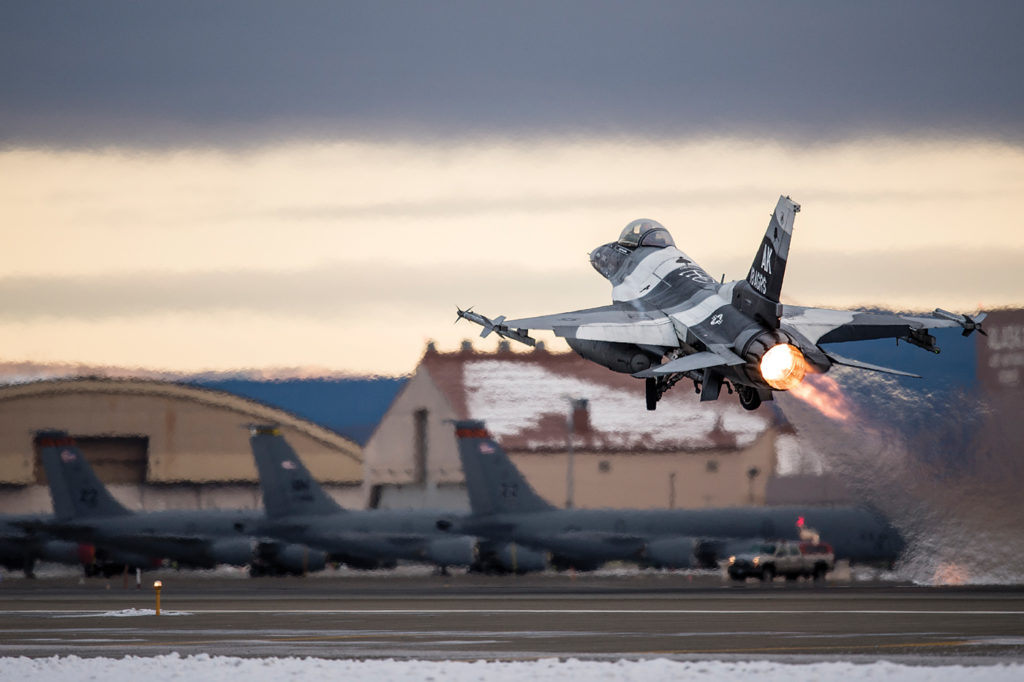
“Every guy on the squadron will have a different one,” said Walker. “When I am doing my mission planning, for example, if I have a specific question about the [Sukhoi] Su-27 Flanker and what it can do, we have a Su-27 expert I can ask for the most accurate answer. And if he doesn’t have it, he has a direct line to one of the three-letter intelligence agencies and can get that information. It is a pretty unique opportunity to have that much expertise in one building.”
As the adversary fighter tactics expert, Walker has developed a bank of knowledge on former Soviet equipment, still operated by many nations today, and the tactics of modern Russian and Chinese fighters. Occasionally, USAF squadrons have also asked for representations of North Korean, Iranian and Syrian capabilities. He’s also acquired an appreciation for thought processes that differ significantly from much of what he has learned.
“Potential adversaries definitely approach the tactical problems very differently than we do in the West,” he said. “And they don’t necessarily think about it the same way that we do. When you approach it from their side, you can start thinking about how to develop our blue air tactics to maybe counter some of those threats that are emerging.”
And even though he is a Canadian, he too has access to the information of the 17 U.S. intelligence agencies.
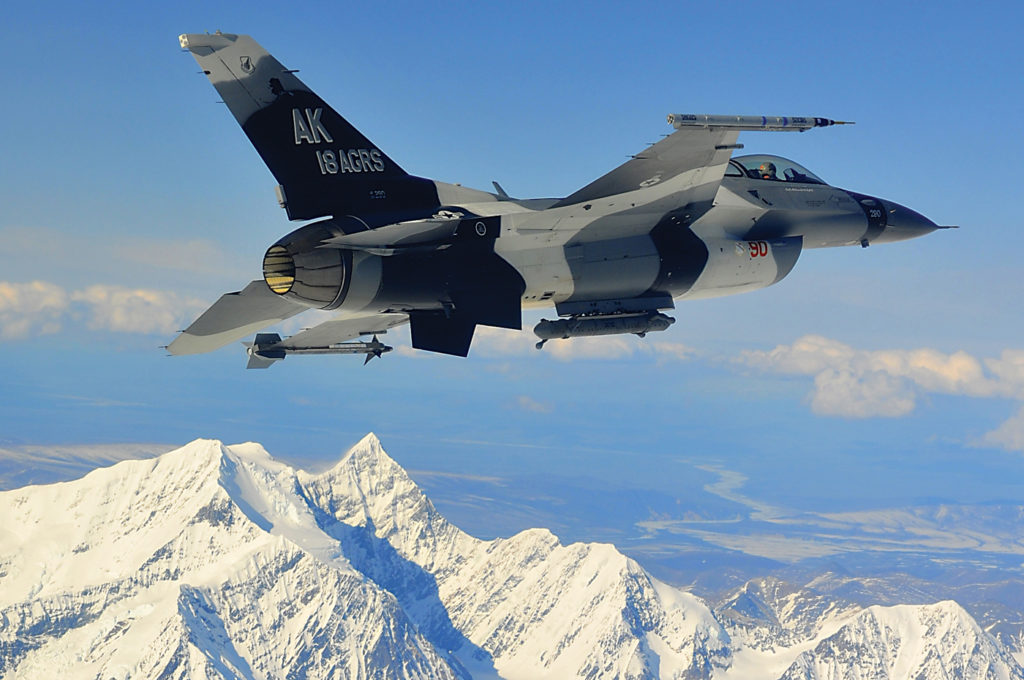
“We get direct access to the intelligence folks who get the latest and greatest information, and we participate in all of the intelligence conferences,” he said, adding that the pilots routinely brief each other “so that everybody has a well-rounded foundation of threat knowledge.”
As part of his assignment, Walker is also ensuring that much of that knowledge is transferred to RCAF colleagues, either indirectly through his contributions to USAF threat manuals, which are shared with Canada, or through briefings to the tactical fighter squadrons at his home base of 4 Wing Cold Lake, Alta., or at a recent fighter tactics working group in Montreal.
“When I come back, I will have all of that experience and knowledge as well, and to the extent that I am allowed to share information, I certainly will add to our manuals and tactics moving forward, as the guys before me have done.”
Dream Posting
Walker’s fascination with aviation began as a child and gained momentum as a teenager working summers for an air charter company in British Columbia that his parents had invested in. He obtained his pilot’s licence while still in high school and, during his final year of university, was swayed by the words of a military recruiter.
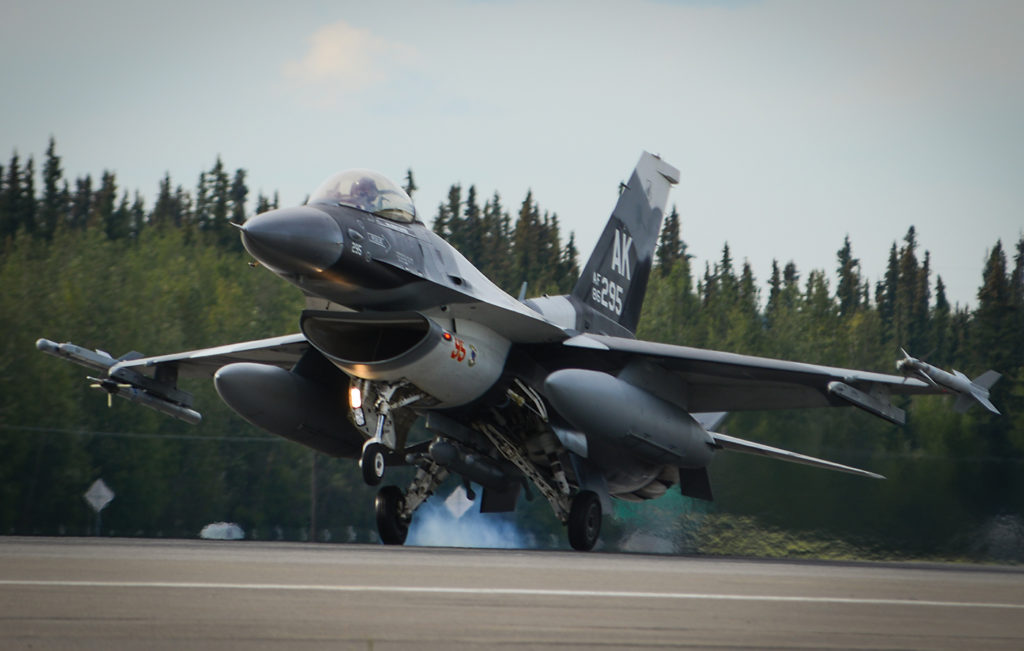
Once accepted by the Air Force, he followed a fighter pilot training path that took him from Portage la Prairie, Man., to Moose Jaw, Sask., and then to 419 Tactical Fighter Training Squadron in Cold Lake. He was deployed to Afghanistan as a forward air controller with 409 Tactical Fighter Squadron (TFS), and then assigned to 410 TFS, where in 2013 he completed the Fighter Weapons Instructor Course, the RCAF equivalent of the U.S. Navy’s Top Gun, a qualification common to most pilots who have later been part of the exchange with the 18th Aggressor Squadron.
The exchange assignment had been high on Walker’s wish list of next job postings, so he felt fortunate when the three-year assignment came through, even though it meant moving a pregnant wife to Alaska in the summer of 2015 (their first son would be born two weeks later, their second in March 2017).
The transition from a CF-188 Hornet to the Block 30 F-16 Fighting Falcon was smoother and faster than Walker expected, beginning with testing in San Antonio, Texas, to see how he handled a 9G profile–a significant step up from the 7.5G profile for the F-18–and then to Luke Air Force Base, Ariz., for a two-month conversion course of intense groundschool and simulator flights, followed by live flying.
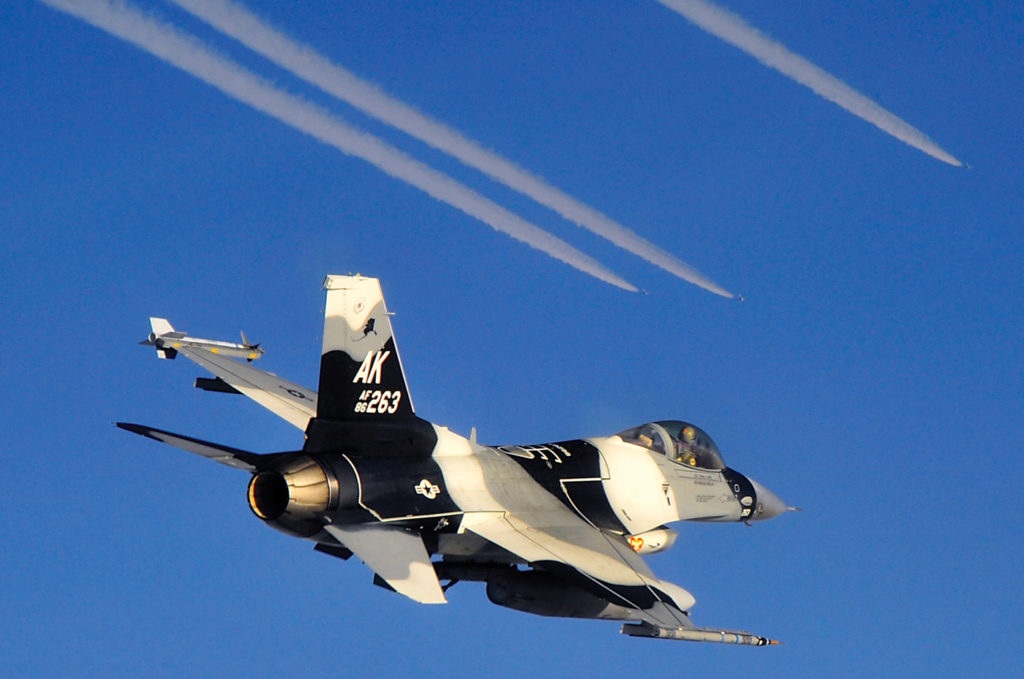
“I think I went solo on my third one, which seemed really crazy to me at the time,” he said. “But it is amazing how quickly you can adapt from one fighter to another.”
Once back in Alaska, he spent the first year working his way back up the squadron hierarchy, much like any newbie, first as a red air wingman, then red air flight lead, and finally as squadron weapons officer and chief Mig-1, a key role deciding how the squadron operates during large exercises such as Red Flag.
“I have a lot of say in terms of what direction we are taking and the type of replication we do,” he explained. “I am the only weapons instructor on the squadron, other than the commander. We have a limited number of guys who are air qualified to be the lead on these large force missions, and I’m in charge of them and making sure everybody is doing things the way we want to do them. It is a big role to give the Canadian, which is a great thing for [the RCAF].”
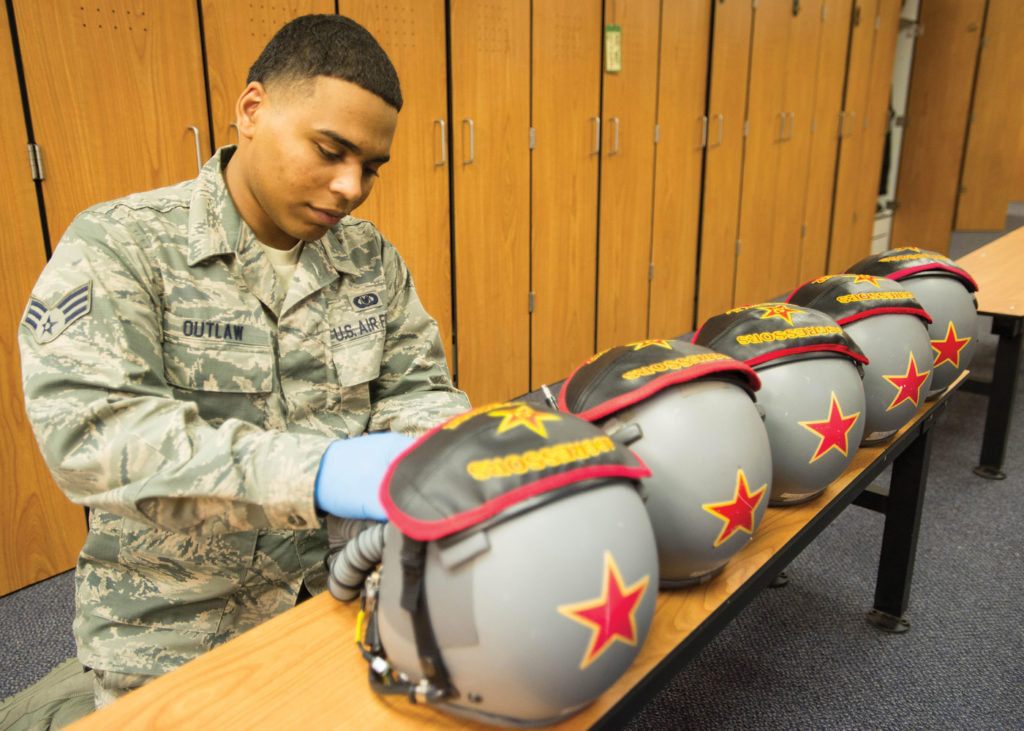
While most taskings involve large scale exercises, from the continental U.S. to Japan and Australia, flying against as many as 50 aircraft, everything from Apache helicopters to F-15C Eagles, F/A-18 Super Hornets, and now F-35 Joint Strike Fighters, local training is often concentrated on the F-22 Raptors of the 525th and 90th Fighter Squadrons out of Alaska’s Elmendorf Air Force Base. On rare occasions, the 18th Aggressors will step out of the “bad guy” role to serve as blue air strikers for F-22 training purposes.
“We’ll step up our threat based on where they are in their [training] syllabus,” explained Walker. “We’ll go from replicating old things like MiG-21s all the way to some of the newest stuff that is emerging.”
The F-16 does have its limitations when it comes to imitating the newest adversary aircraft, he acknowledged, “but we have very good information on some of the fourth generation and older threats, and we will actually limit our own systems onboard our aircraft to replicate as best we can what a pilot flying that aircraft would be limited to.”
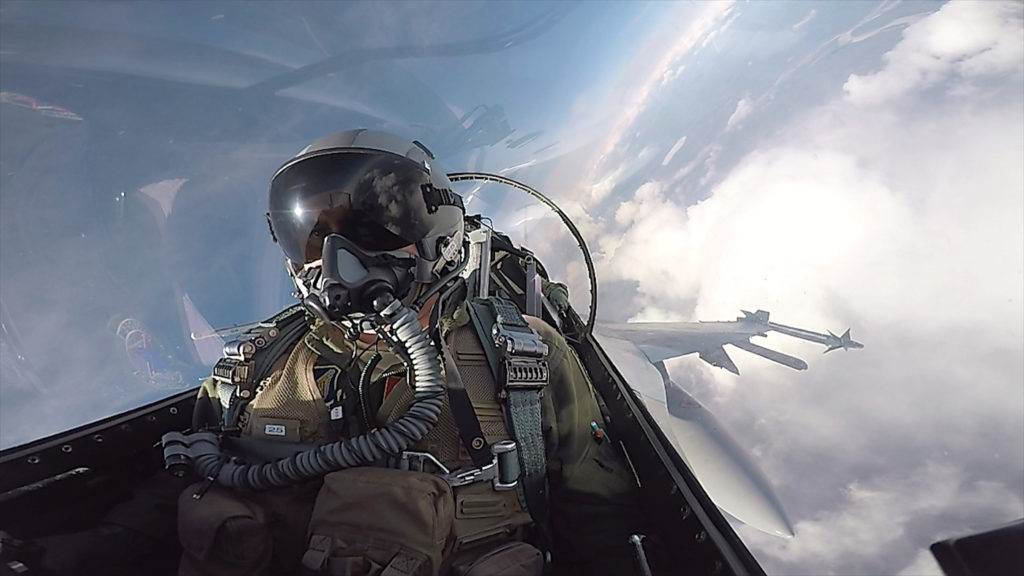
And those limitations are becoming more pronounced as more fifth generation aircraft like the F-35 enter service. Walker has only had a few encounters with Lockheed Martin’s F-35 Lightning II, but he said it has a distinct advantage.
“It is a complete game changer in terms of the actual limitations we have in finding them and deploying against them. It is a completely different world of air combat at that stage. Any time I can work with fifth-gen fighters, it is pretty eye opening.”
As the only foreign pilot on an aggressor squadron with access to top intelligence, he does get the odd look of surprise when his Canadian colours are revealed. But while there are “things that I am not read into that are U.S. only, for the most part I am granted a bit of extra access so I can do my job,” he said.
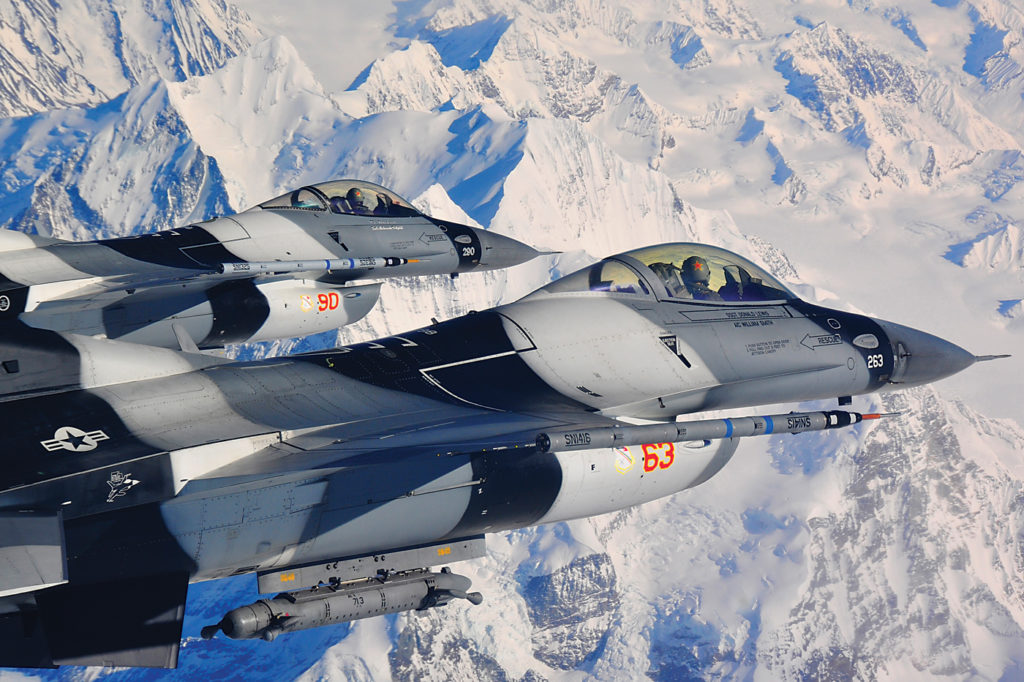
However, the 18th Aggressor Squadron has modified his call sign slightly in recognition of his nationality.
Although he is big and might “sort of look like an ogre” in his green flight suit, he said the origins are much more benign. When he failed to hear a colleague repeatedly calling his name, the buddy yelled “Shrek,” prompting him to turn his head, and the nickname stuck. Since the Aggressors already have one “Shrek” in their ranks, he has become “Shrek-Eh.”
“They think it’s hilarious.”
